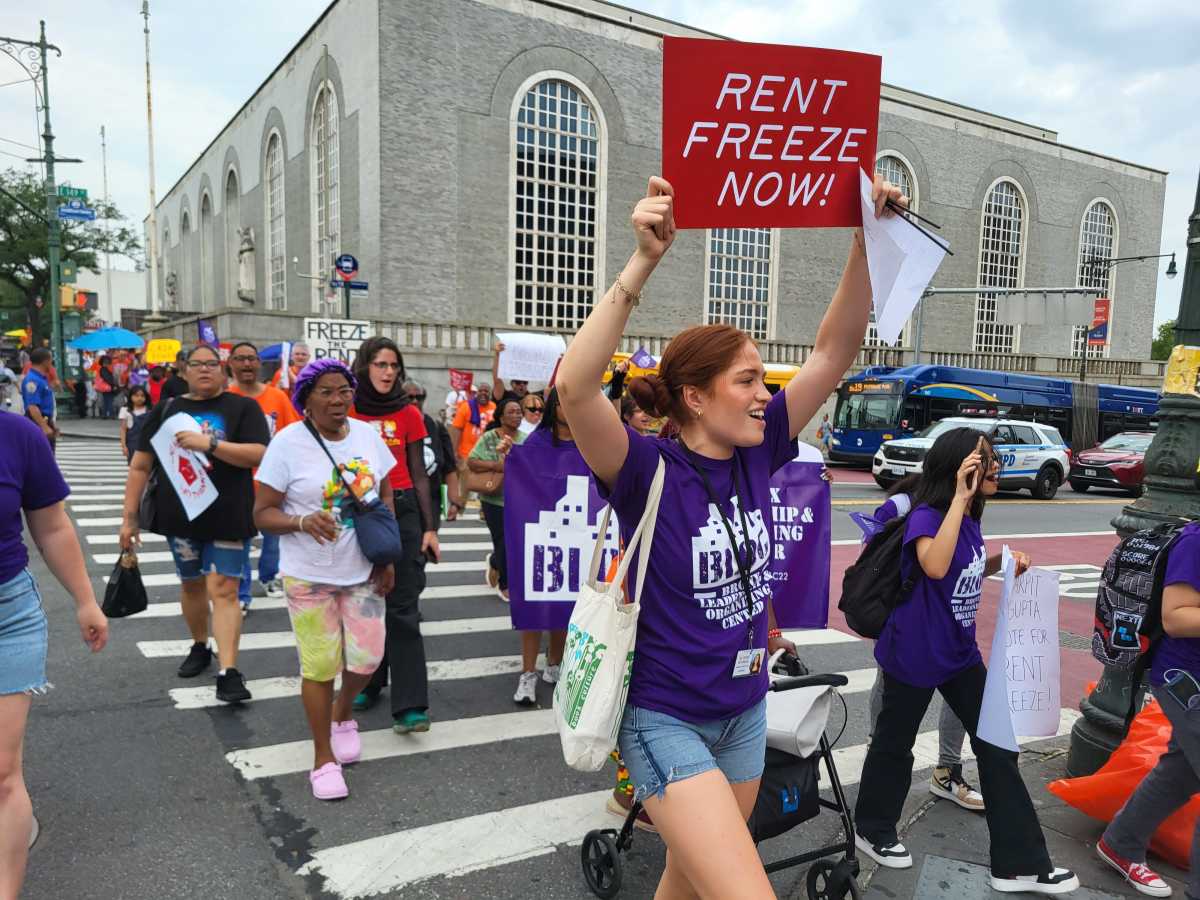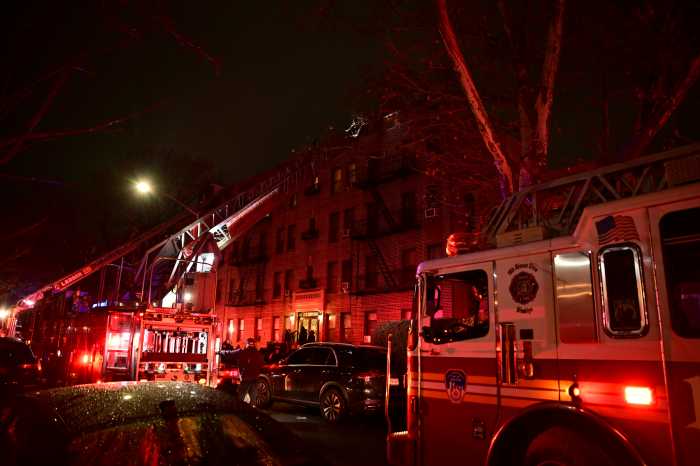At least half of the Democratic mayoral candidates are advocating for freezing rent for regulated apartments in response to New York City’s growing affordability crisis, entering a bitterly divided debate over the proposal’s feasibility and benefits.
A rent freeze would prevent landlords from increasing rent for rent-stabilized buildings, which advocates say is a necessary measure to prevent widespread evictions. But critics respond that rent freezes unfairly impact small property owners, limit capital improvement projects and harm the city’s overall economy.
About half of the rental apartments in New York City — just over one million — are rent-stabilized, according to an amNewYork review. Most buildings with more than six rental units built before 1974 are rent-stabilized, as well as newly built affordable housing receiving tax breaks and city subsidies.
That means, under the guidelines of a 2019 rent law, landlords cannot raise rents without citywide approval from the Rent Guidelines Board (RGB), the city body created to regulate rent-stabilized apartments. The RBG sets rent increases each year after a series of public hearings, with a rent freeze simply referring to a 0% increase.
Renters in rent-stabilized apartments have a lower median income than their counterparts in unregulated apartments, according to a 2022 report from New York University’s Furman Center. But buildings also face maintenance deficiencies and physical distress because of the relatively low rental costs.
City Comptroller Brad Lander, the city’s elected chief financial officer who is running for mayor, petitioned the RGB for a rent freeze for 2025-26 in an April testimony, pointing out that landlords’ net income increased by 8% from 2022 to 2023, adjusting for inflation.
“New York City is in the midst of a housing emergency and tenants are struggling to make ends meet,” Lander said. “The data laid out by the RGB demonstrates that this year, landlords have more than the income they need to keep the heat on, make repairs, pay their supers a living wage, and keep their buildings well-maintained.”
But Ann Korchak — president of Small Property Owners of New York, a landlord advocacy group — told amNewYork that those numbers ignore the necessary capital improvements and debts that landlords have to pay.
“That’s not profit,” Korchak said. “That’s the cash that’s left to pay your debt, and the cash that’s left to pay your capital improvements.”
A fight between tenants and landlords
Cea Weaver, director of advocacy group Housing Justice for All, told amNewYork that a rent freeze is necessary to address New York City’s affordability crisis.
“Any increase is too much right now,” Weaver said. “People are really struggling to afford the basics. It’s really about stopping housing costs from going up — tenants need a break.”
Weaver said keeping rent-stabilized apartments affordable is important to maintaining the city’s diversity.
“Rent stabilization is the real bedrock of what makes New York an affordable place for working-class, middle-class and low-income families of all races, genders and generations,” Weaver said. “It’s the bedrock of New York City’s housing stock, and right now, tenants can’t afford their rent.”
Korchak said the same inflationary costs hurting tenants are hitting landlords, especially small or family-owned buildings, which her organization represents.
“I see my role as being the voice saying what’s really happening in these properties, and a rent freeze just is not realistic,” Korchak said. “And in every single service, every single product that people buy and use, is increasing, and housing is not excluded from that.”
Eric Kober, a senior fellow specializing in housing policy at the Manhattan Institute, a conservative think tank, told amNewYork that the problem lies in the Housing Stability & Tenant Protection Act of 2019, which added regulations for rent-stabilized housing.
The 2019 law restricted case-by-case rent increases while prohibiting owners from increasing rents after a tenant vacates a unit. While housing advocates celebrated the tenant protections, Kober said the law upended the housing system by removing streams of income for landlords.
“These are all ways to get money into buildings while maintaining rent-stabilization for existing tenants, and they were all eliminated as a way of punishing landlords in the 2019 rent law,” Kober said. “If you want housing to be properly maintained, you have to allow some avenues for landlords to make money.”
Korchak said small property owners like herself and the members of her organization operate “off the rent roll,” meaning that they rely on rent not only for income but also for capital improvements and repairs. When rent increases don’t match inflation, she said, buildings fall into physical distress.
Kober — who worked as director of housing, economic and infrastructure planning at the New York City Department of City Planning until 2017 — said the city cannot support declining physical infrastructure of affordable buildings, noting the struggling public housing system.
“The city is putting money into public housing now, but it is not putting enough to meet their overall capital needs, and it can’t,” Kober said. And if you add the whole rent stabilized private stock that’s another million houses, and that’s something that the city is not fiscally in a position to take on.”
“It has to come out of rents one way or another, and if it doesn’t, then you’re going to get the kind of deterioration that we’ve seen in public housing, which is terrible for tenants,” Kober added.
Weaver said increasing rent hurts tenants rather than helping infrastructure, fueling economic divides between tenants and landlords.
“When tenants can’t afford their rent, a rent increase is just going to lead to eviction,” Weaver said. “It’s not going to lead to improved housing quality. The RGB data shows that often when the rent goes up, conditions stay the same.”
“This rental unaffordability is driving inequality in our city,” Weaver added.
For Weaver, rent freezes are a step toward the long-term solution of public housing, which she said would limit private greed.
“The real, long-term solution to the housing crisis is public investment — publicly separated, permanently affordable housing,” Weaver said. “A rent freeze helps that be possible by limiting the speculative value of buildings and creating the opportunity for the public sector to step in.”





































